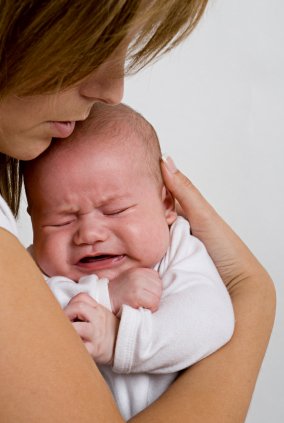
I recently received a card for the birth of our son. On the front it reads, “Children are a gift from God.” When you open it, it continues, “Remember that at 3 in the morning!” Waking up to feed, care for, and console small children is not most parents’ idea of a good time. And yet, we do it. Not all of us, perhaps, but many of us, much of the time. It seems like one of those things we just “do”; often grumbling about it before or afterwards, but rousing ourselves nevertheless. I was recently re-reading a chapter of The Philosophical Baby, by Alison Gopnik. I first discovered Gopnik’s work after the birth of my first child, and I am indebted to her for giving me a sense of the importance of seemingly minor infant and child behaviors. While babies are quite ridiculously cute, I am not someone naturally ecstatic about focusing my entire life on caring for them. Gopnik’s explanations of the things going on inside children; their reasoning process, even as infants, made a whole host of (previously uninteresting) behaviors suddenly compelling to me.
The chapter I was re-reading is called “Learning to Love” and in it, Gopnik shows how infants develop expectations about love based on what they experience with their caregivers. In particular, she looks at studies that show a) how infants and caregivers (especially parents) connect, especially looking at types of parental reactions to children; b) how these infants learn to make predictions about the ways caregivers interact with them and other children, and c) how children and grownups come to expect other people to behave like their parents.
To explain some key concepts in Gopnik’s words, “The internal working models of attachment, like other theories, are based on the evidence babies have about the people around them. Mothers who respond quickly to babies’ signals—who return to babies after they leave and comfort babies when they are unhappy—are more likely to have “secure” babies. Mothers who don’t react with comfort when babies are distressed are more likely to have avoidant babies. Mothers who express a great deal of distress themselves are more likely to have anxious babies.” So…when mothers respond quickly to their children, their babies tend to develop “secure” attachments; when they don’t, they tend towards “insecure” attachments.
Gopnik then tells of some clever experiments in which children are shown little (baby) balls accompanied by larger (mother) balls. At a certain point, the baby starts to cry, and the mother ball either moves towards or away from the baby ball in response to that cry. Babies look at things longer when they depart from their usual expectations, and so researchers have been able to tell what babies expect by noticing what they watch longer and with greater curiosity. Insecure babies look longer at the mom ball who moves towards the baby ball—they’re surprised by her. Secure babies, on the other hand, watch the big ball who moves away from the little one, since that’s not usual in their experience.
While a lot can happen from infancy to adulthood, there are further studies (too varied and complex to get into here) that show that the expectations formed in infancy tend to endure. While we are not determined by our childhoods, we naturally tend to imagine that we will be loved in the future if we’ve been loved in the past. And if we haven’t been loved in the past, we tend to think it’s unlikely in the future.
So when you wake up at 3 in the morning to respond to your baby’s cries, you’re building a legacy of secure attachment for her: making her know that she is loved now, and will be forever.

















